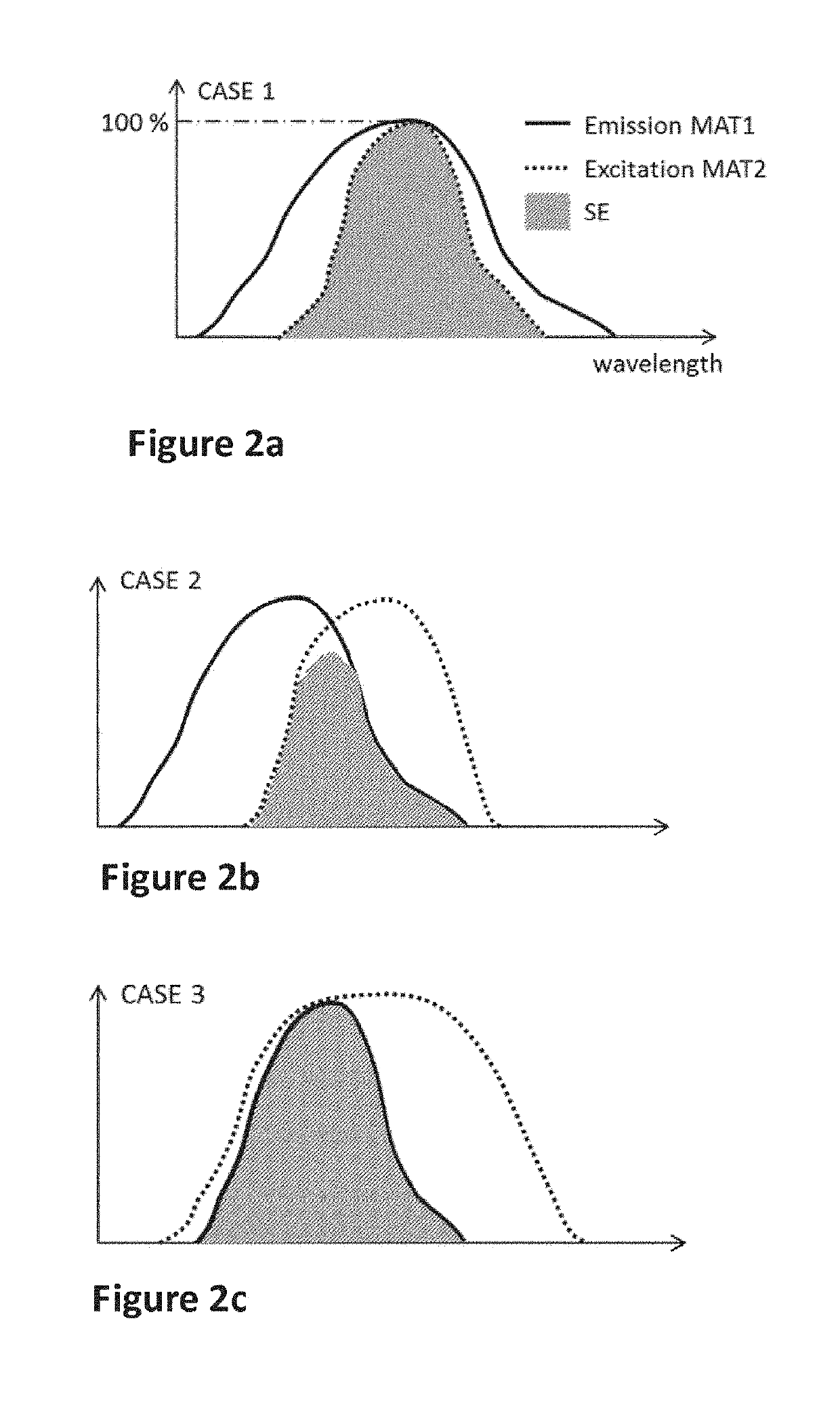Security element formed from at least two materials present in partially or fully overlapping areas, articles carrying the security element, and authentication methods
a technology of security elements and materials, applied in the field of security elements formed from at least two materials present in partially or fully overlapping areas, articles carrying the security element, and authentication methods, can solve the problems of loss of properties, limited choice of fluorescent products that can be incorporated into the ink formulation for these technologies, and additional limitations on the choice of fluorescent products. fluorescent products, and achieve the effect of strong authentication and stronger authentication of visible or invisible dots
- Summary
- Abstract
- Description
- Claims
- Application Information
AI Technical Summary
Benefits of technology
Problems solved by technology
Method used
Image
Examples
example 1
[0241]In order to demonstrate the invention, several marks composed of a phosphorescent print made from INK1 with digitally printed codes or logos on top made from INK2 were produced (see Table 1 below)
[0242]Preparation of long afterglow background ink (INK1):
[0243]The phosphorescent pigments were incorporated in the formulation of silk screen inks based on the following blank composition:
[0244]31.5 wt.-% Tripropyleneglycol diacrylate monomer, 17.9 wt.-% trimethylolpropane triacrylate, 19.0 wt.-% FBECRYL™ 2959, 11.6 wt.-% EBECRYL™ 80, 2.1 wt.-% TEGO® Airex 900, 1.0 wt.-% GENORAD™ 20, 9.5 wt.-% Calcium carbonate, 2.1 wt.-% Benzil dimethyl ketal and 5.3 wt.-% IRGACURE™ 1173. While this system is preferably used for the present invention, also other systems can be employed as long as it is ensured that there is no or very little spectroscopic or chemical interferences of the blank with the phosphorescence of the phosphorescent pigments that will be added to form MAT1 or INK1, INK1 can ...
example 2
[0272]In the following example 2, two different formulations of INK1 were tested based on the following blank properties in order to determine the effect of ink compositions on the observed cascade effect:
[0273]1) INK1 with solvent-based blank formulation (FORMULATION blank A) Where the dry inks layer is thin and hence pigments are concentrated and much of them are close to the top surface
[0274]2) INK1 with UV-curable resin blank formulation (FORMULATION blank B) where dry ink layer is significantly thicker, the pigments are homogeneously distributed along the thickness (z axe) of the print layer, and consequently, the pigment concentration at the surface of the print is reduced as compared to the solvent based ink
[0275]Both of these inks blanks are used for silk-screen inks and their espective formulations are described in details below, For the example described here, two examples of INK1 using the two different blanks were formulated by adding 15%-weight of Lumilux® green SN-F2Y ...
PUM
 Login to View More
Login to View More Abstract
Description
Claims
Application Information
 Login to View More
Login to View More - Generate Ideas
- Intellectual Property
- Life Sciences
- Materials
- Tech Scout
- Unparalleled Data Quality
- Higher Quality Content
- 60% Fewer Hallucinations
Browse by: Latest US Patents, China's latest patents, Technical Efficacy Thesaurus, Application Domain, Technology Topic, Popular Technical Reports.
© 2025 PatSnap. All rights reserved.Legal|Privacy policy|Modern Slavery Act Transparency Statement|Sitemap|About US| Contact US: help@patsnap.com



